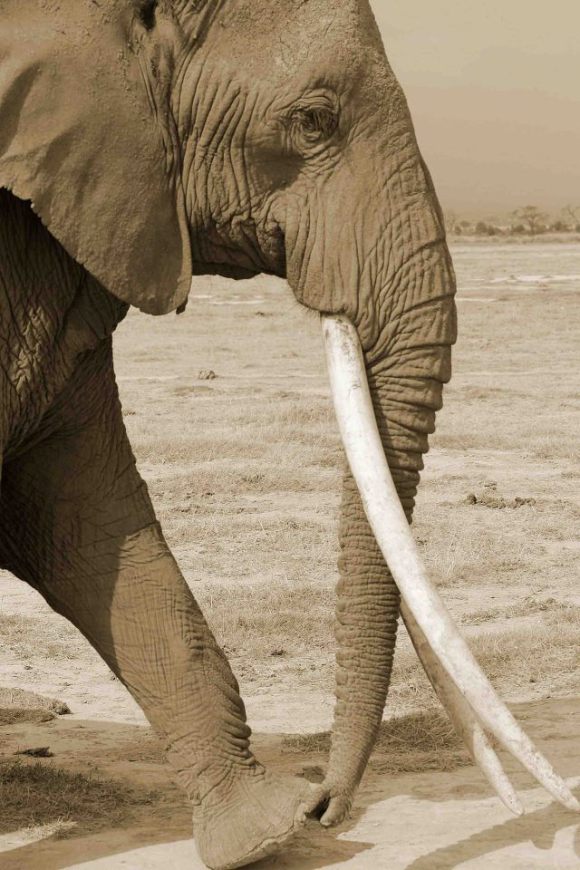
Jasiri, which means “brave one”, an orphaned albino elephant.
Jasiri was born in December 2011, to Jemima, the matriarch of the JB family. We realised right away he was special; the first albino calf documented in Amboseli in the 40 years we’ve been following them. We were all delighted at how fast he grew, and he was always very fat and full of personality. Tragedy struck at Christmas 2012, when we found Jemima’s carcass. We suspect she may have been shot by poachers, although her tusks were intact. Her daughter Jalila and grand-daughter, Jasiri’s age mate, were also missing and there was no trace of Jasiri. After months passed, we gave up hope of ever finding any of them again.
Imagine our amazement when Jasiri - whose name means “brave” in Kiswahili - appeared, alone in the Park, 3 months after his mothers’ death. He had come almost 20km from the site we found Jemima; I couldn’t believe my eyes when I spotted that blonde tail hair. We think he survived because he was in such good condition before his mother died, and because it has been a time of plenty in Amboseli. Still, he could never have made it all on his own, and we’re so grateful that DSWT will give him a safe and loving home with other elephants until he is big enough to become a Tsavo elephant in Ithumba. He has been through a great ordeal, and there are no guarantees, but his fighting spirit is inspirational. -VF
This slideshow requires JavaScript.
(story and photos reposted from Amboseli Trust for Elephants - learn more about The David Sheldrick Wildlife Trust and consider sponsoring an orphaned elephant like Jasiri today!)
Like this:
Like Loading...


